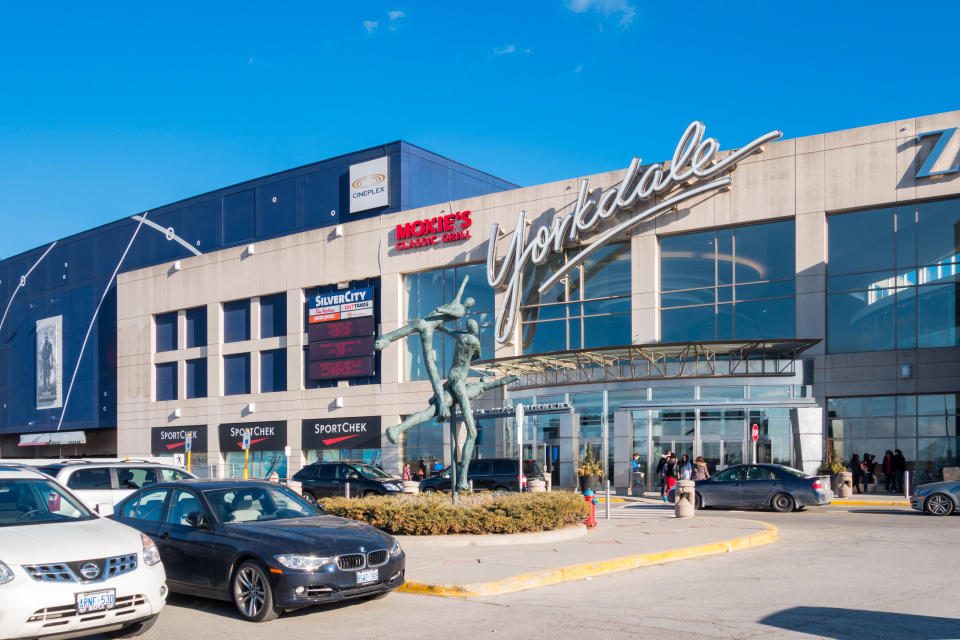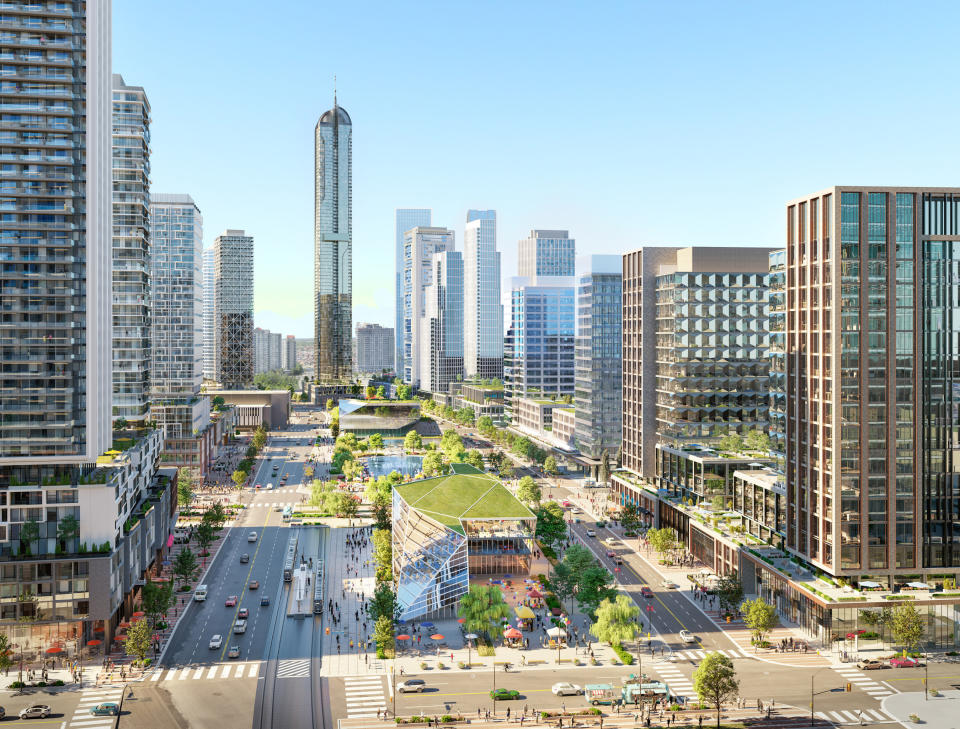'There is no retail apocalypse': Canada's top shopping malls see sales growth

Many Canadian shopping malls are seeing sales growth as owners pour cash into non-retail amenities, such as entertainment spaces and unique food markets, in an attempt to retain and attract customers.
That’s according to the 2019 Canadian Shopping Centre Study, conducted by the Retail Council of Canada in partnership with Engagement Agents. The study found that most of the Canada’s top shopping centres saw annual sales per square foot increase in 2019 when compared to last year – in one case sales jumped by as much as 47 per cent.
“Shopping centres are enjoying a renaissance,” the report said.
“The millions of dollars Canada’s top malls have recently invested in upgrades are continuing to make these malls more productive and attractive to shoppers.”
For the fourth year in a row, Toronto’s Yorkdale Shopping Centre was ranked the “most productive” mall in terms of sales out in Canada, with its high-end, luxury tenants and solid foot traffic boosting annual sales per square foot by 3 per cent from 2018 to $1,964. Vancouver’s CF Pacific Centre was next, with sales per square foot up 10 per cent to $1,865, followed by CF Toronto Eaton Centre, which saw sales up 2 per cent to $1,592.
The growth comes as many malls invest millions in upgrades and add sales-boosting tenants, including luxury retailers and high-margin Tesla showrooms. Just five of the top 30 Canadians malls did not feature an Apple store, which the report said could lift sales by more than $100 per square foot.
Diane J. Brisebois, president and chief executive of the Retail Council of Canada, said in an interview that the growth of e-commerce and online shopping has forced mall property owners and brick-and-mortar retailers to make significant investments to attract customers. She said the study results show that those investments are paying off.
“What online shopping has done is really incentivized retailers and mall property owners to become very creative and very agile. I think everyone understands now that you’re not just refreshing your space, but you’re constantly reinventing,” Brisebois said.
“That means healthier budgets for capital expenditures on experiential marketing, product design and display... We’ve never seen so much capital in those areas from our retailers and shopping centres.”
Brisebois pointed to the Montreal Eaton Centre as an example of how malls are “upping their game” when it comes to attracting new customers.
“It’s gone that notch above food court and turned it into a food experience... It’s no longer what we think of when we think of food courts in the mall,” she said.
“It has become so experiential and so in-demand that you can barely move at times because it’s become so popular.”
Mark Satov, president and founder of Satov Consultants, said the study is further evidence that “there is no retail apocalypse.” However, he noted that while the high-end malls are thriving, many smaller so-called B and C-level malls – ones that don’t feature sales-boosting Apple stores and luxury retailers – are struggling.
“When stores want to bring people in, they either need to provide an experience that you can’t get on the internet, or make sure people are not giving up on price so it’s worth the drive,” Satov said.
“It has to be worth the trip because if it’s not, I’m just going to buy it online... They’re going to need to find an anchor that is a discounter, or experiences that will bring people in.”

Some malls are taking their investments a step further and turning spaces in and around malls into mixed-use developments. On Tuesday, Oxford Properties unveiled an ambitious plan to convert the parking lots surrounding Mississauga’s Square One mall into a mixed-use development featuring thousands of residential units as well as retail, office and public amenities. The company says the development, called the Square One District, will be the largest mixed-use development in Canada and anchored by the existing shopping mall.
“In the last couple of years, we’ve noticed that there has been a lot of residential development around these mall properties, but now it is within the mall properties,” Brisebois said.
“Canadians, especially younger Canadians, have said they would consider buying or renting if it was within a shopping mall... That’s the reason why we’re seeing more and more of these proposals.”

 Yahoo Finance
Yahoo Finance 
